SainSonic Kamlan 50 mm f/1.1
3. Build quality
In the photo below the Kamlan 1.1/50 is positioned between two Fujinons, the 1.4/35 and the 1.2/56; you can notice at once that the tested lens is a lot smaller than the second, a bit slower device.
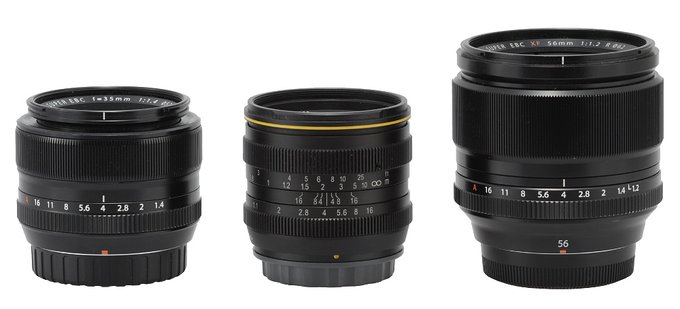 |
Please Support UsIf you enjoy our reviews and articles, and you want us to continue our work please, support our website by donating through PayPal. The funds are going to be used for paying our editorial team, renting servers, and equipping our testing studio; only that way we will be able to continue providing you interesting content for free. |
- - - - - - - - - - - - - - - - - - - - - - - - - - - - - - - - - - - - - - - - - - - - - - - -
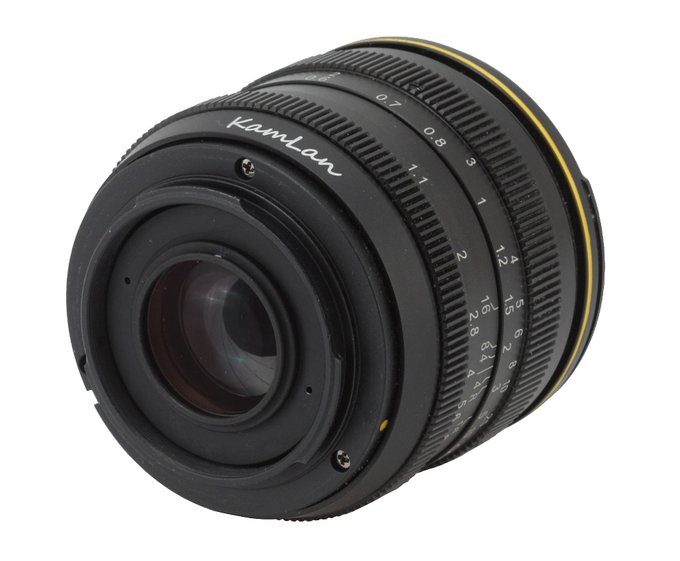 |
The black casing of the lens is made of metal; it starts with an immobile ring with an orange dot, making an alignment with a camera easier, a branding inscription ‘Kamlan’ and the serial number of the device.
The next part is an aperture ring. It is 10 mm wide and most of its surface is covered by ribbing. Above that ring you find aperture marks by f/1.1, f/2, f/2.8, f/4, f/5.6, f/8, f/16. I would understand the lack of f/11 value because the distance from f/8 to f/16 is really short but the fact that the producer omitted the f/1.4 mark is, in my opinion, strange. The ring moves smoothly and is properly damped but it is a ‘clickless’ mechanism, with no fixed f/stops so you cannot change the aperture by a given, pre-determined value. Perhaps it is a nice bow to videographers but during photography such a solution is moderately functional. If you want to control the aperture value you have to glance at the lens first and set it where you want it to be. It is impossible to work with your camera close to your eye because you don’t know what value you are setting and you cannot get any digital viewfinder readings either.
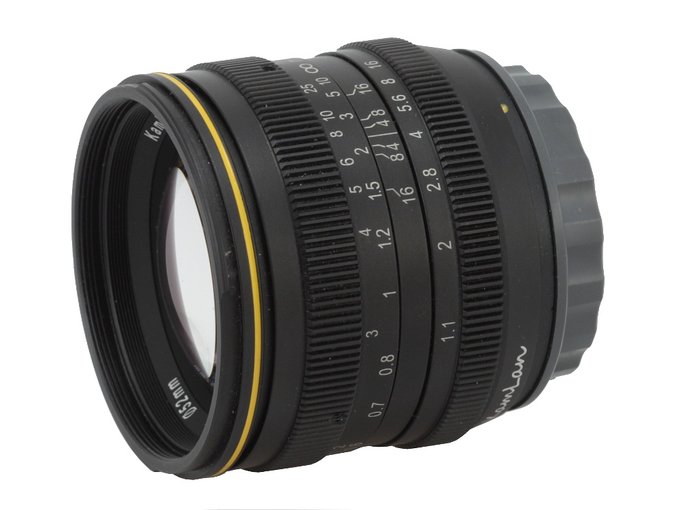 |
Further on, you see a manual focus ring, 19 mm wide. One part of the ring is covered by metal ribs and below you find a distance scale expressed in feet and meters. The ring works evenly and is properly damped. Running through the whole distance scale needs a turn through an angle of 180 degrees.
At the end of the lens you see a yellow strip and a hood mount. The front element is 44 mm in diameter and surrounded by an inscription with the name and parameters of the lens along with a non-rotating filter thread, 52 mm in diameter. The element moves with the whole optical system – it means the lens doesn’t change its focal length with the change of the distance from a photographed object.
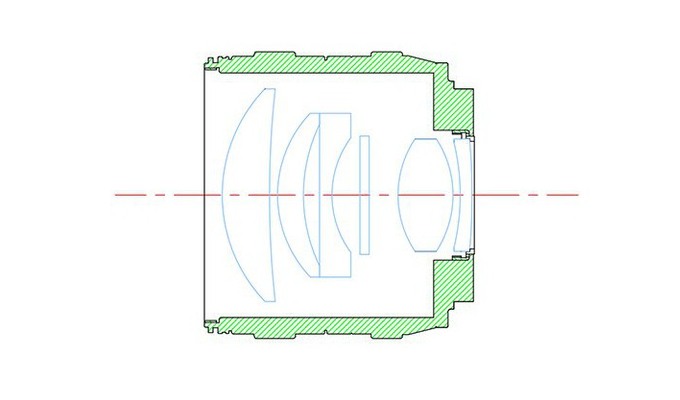 |
The simple optical construction should be emphasized here - such a fast, bright aperture and just 5 elements. Other 50 mm f/1.4-1.8 devices often feature 6-7 elements. Direct rivals of the Kamlan, the Samyang and the Fujinon mentioned earlier, have twice the element count inside.
Buyers get with the lens both caps and a hood in the box.
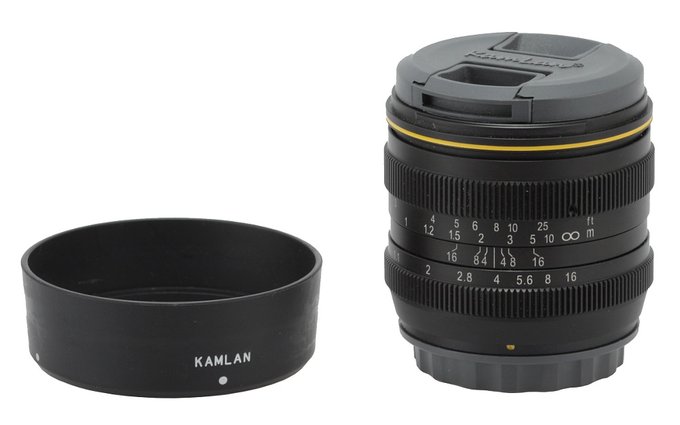 |






